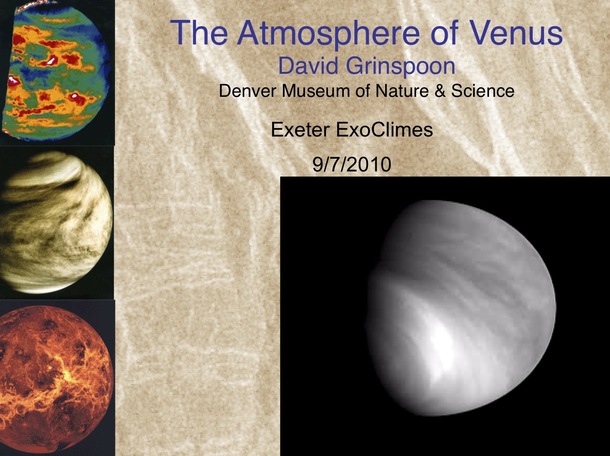Comparative planetology > David Grinspoon
Loading the player ...
The atmosphere of Venus
David Grinspoon
Denver Museum of Nature and Science, USA
Help



Abstract: Venus is commonly thought to have experienced a transition, early in its history, from a wet, more Earth-like environment to its current hot and highly desiccated state. A more recent global transition is indicated by the sparse, randomly distributed and relatively pristine crater population, which implies a rapid decrease in volcanic resurfacing rate between 300 and 1000 Myr ago. The accompanying precipitous decline in out-gassing rate may have caused large climate change. Geological evidence for dramatic changes in resurfacing rate implies large amplitude climate changes which may have left a record of synchronous global deformations and other climatically forced geological signatures. These two transitions may have been causally related if the loss of atmospheric and interior water caused the transition from plate tectonics to single plate behaviour. Today ongoing volcanism most likely provides the ingredients for the global sulphuric acid cloud decks. Rapid loss of SO2 to carbonates at the surface and H2O to space strongly implies an active source for these gases on the scale of 10's of million years. The stability of Venus' climate is therefore dependent upon active volcanism and the sulphur cycle.
Additional materials: PDF of slides
ExoClimes 2010, Exeter, Tuesday 7th Sep 2010
Additional materials: PDF of slides
ExoClimes 2010, Exeter, Tuesday 7th Sep 2010
